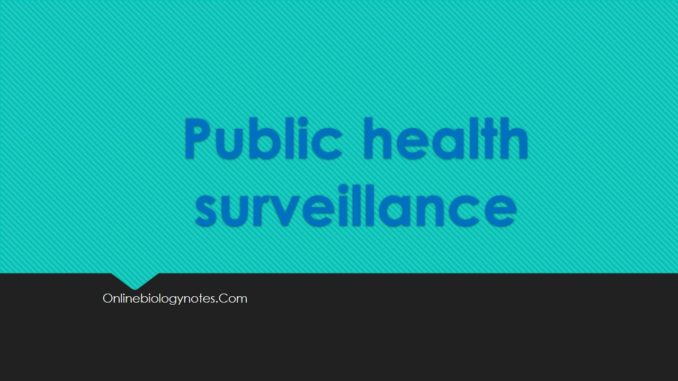
Public health surveillance:
- Public health surveillance is the systematic process of data collection, analysis, and interpretation with the routinely dissemination of these data to concern authorized body responsible for preventing and control of disease and infection.
- It is a tool to estimate the health status and behavior of the populations. Public health surveillance measure what is going on in the population, it is useful both for measuring the need for interventions and for directly measuring the effects of interventions.
- The purpose of surveillance is to empower decision makers to lead and manage more effectively by providing timely, useful evidence.
Level of public health surveillance:
1. Peripheral level:
- It is the lowest unit of health services.
- Here, the patients in the contact to health worker who are not highly qualified and diagnostic facilities are not available.
- So, the cases are only suspected but not confirmed.
- Sub-health post and health-post in VDC level are included in peripheral level.
- The responsibilities of these level are provisional diagnosis and suspect of disease, case management, reporting of cases to higher level with simple tabulation and graphical data.
2. Intermediate level:
- Depends on the size of country, development and structure of health services.
- In our context, district or regional hospitals or health care settings.
- The main aim of this level are analysis data comes from peripheral level, identify outbreak and find the changes in disease trends.
- The responsibilities are case management, data analysis, suspected outbreak investigation, provide feedback to peripheral level and dissemination of data to central level.
3. Central level:
- It is the nation level of the body for surveillance.
- Here, policies are determined and includes sophisticated high level epidemiological skills and lab facilities.
- In our context, epidemiology and disease control decision as well as National Public Health Laboratory (NPHL).
- The responsibilities of central level in the activities of national health, data analysis for epidemiological links, disease link, provide provision for diagnosis, feedback and support intermediate and peripheral level, dissemination of periodic report to international level.
4. International level:
- International level refers to WHO, regional reference laboratories and its regional offices.
- The major responsibilities of this level of different country and routinely publish the surveillance reports.
